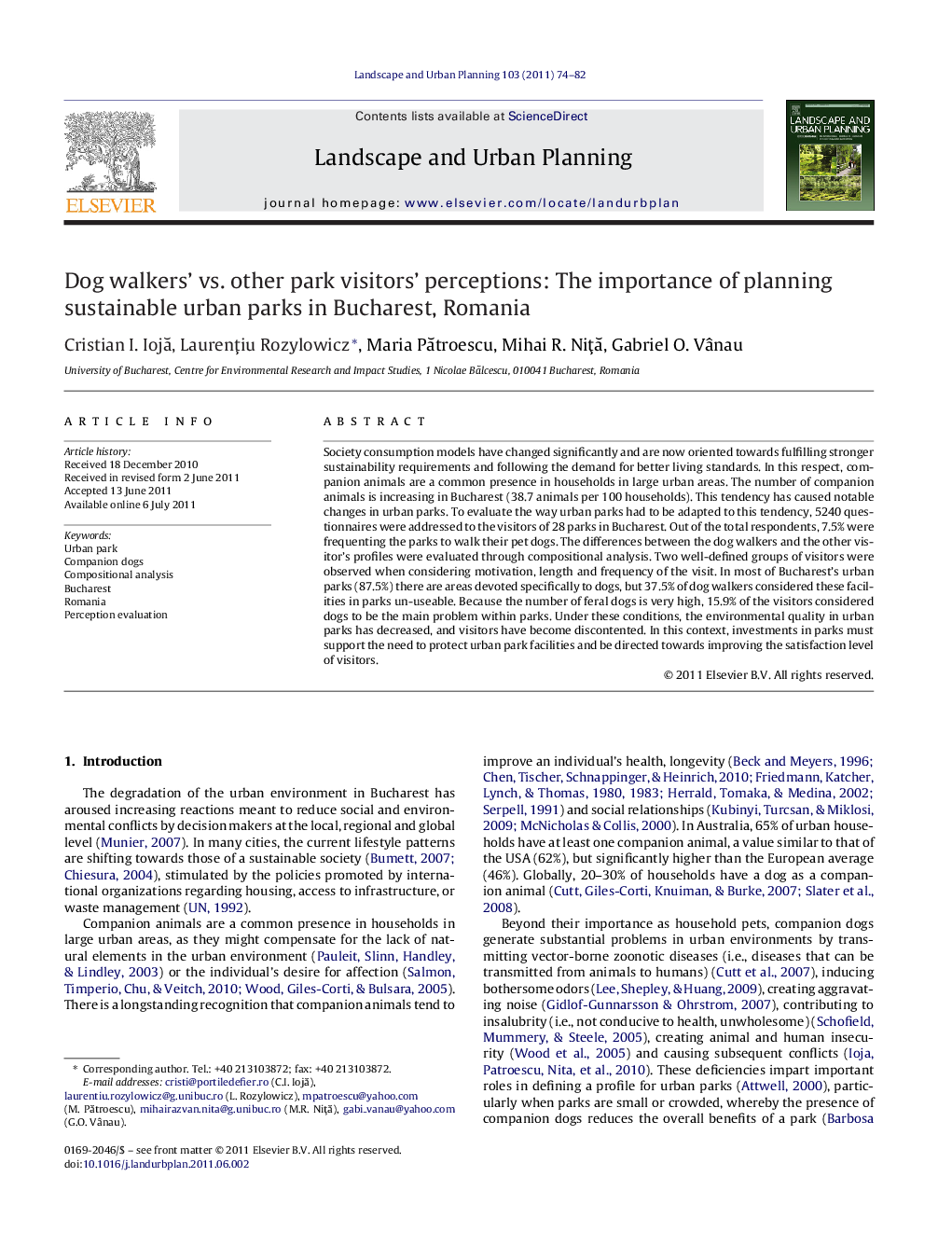| Article ID | Journal | Published Year | Pages | File Type |
|---|---|---|---|---|
| 1049617 | Landscape and Urban Planning | 2011 | 9 Pages |
Society consumption models have changed significantly and are now oriented towards fulfilling stronger sustainability requirements and following the demand for better living standards. In this respect, companion animals are a common presence in households in large urban areas. The number of companion animals is increasing in Bucharest (38.7 animals per 100 households). This tendency has caused notable changes in urban parks. To evaluate the way urban parks had to be adapted to this tendency, 5240 questionnaires were addressed to the visitors of 28 parks in Bucharest. Out of the total respondents, 7.5% were frequenting the parks to walk their pet dogs. The differences between the dog walkers and the other visitor's profiles were evaluated through compositional analysis. Two well-defined groups of visitors were observed when considering motivation, length and frequency of the visit. In most of Bucharest's urban parks (87.5%) there are areas devoted specifically to dogs, but 37.5% of dog walkers considered these facilities in parks un-useable. Because the number of feral dogs is very high, 15.9% of the visitors considered dogs to be the main problem within parks. Under these conditions, the environmental quality in urban parks has decreased, and visitors have become discontented. In this context, investments in parks must support the need to protect urban park facilities and be directed towards improving the satisfaction level of visitors.
• We use compositional analysis to determine the profile of Bucharest's urban park visitors. • Significant differences, influenced by the motivation, duration, and frequency of the visits, were recorded among visitors with and without companion dogs. • Dog walkers require features that are supplementary to traditional park features. • Existing park dog areas are underused due to the insufficiency of dog-friendly features. • Park planning must consider dog walkers expectations, as derived from ex-ante assessment.
